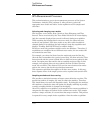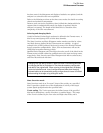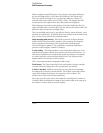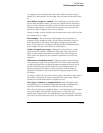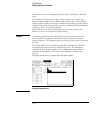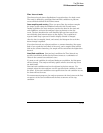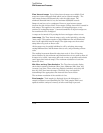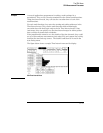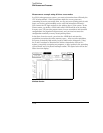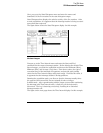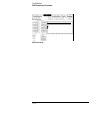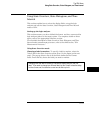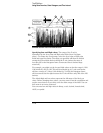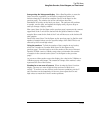
Time Interval ranges
Up to 8 time interval ranges are available. Each
range has a lower and upper limit which can be entered manually. The
Auto-range feature will automatically scale the eight ranges. The
minimum allowable limit is 0 ns, the maximum 9,999,999 seconds.
Ranges do not have to be contiguous. However, gaps between ranges
increase the risk of missed data. If two ranges overlap, data will be counted in
both ranges. This applies to any number of overlapping ranges, or any
portions of overlapping ranges. Common boundaries of adjacent ranges are
not considered to be overlapped.
A range can be turned off by setting the lower and upper values to zero.
Auto-range
The Time Interval ranges can be scaled quickly by selecting
"Auto-range." This option requires a global Minimum time and Maximum
time for the eight time interval ranges. The eight ranges are then scaled
using either a log scale or linear scale.
All the ranges may be quickly initialized to off by selecting Auto-range,
setting Minimum time and Maximum time to zero, and performing a linear
scale.
The smallest increment allowable using Auto-scale is 10 ns. If the time
interval defined by the minimum and maximum times is too small to allow all
8 ranges to be scaled, Auto-range will scale as many as possible and exclude
some upper time interval ranges. The maximum resolution of each time
interval is 10 ns.
Min, Max, and Avg Time Statistics
The Time Interval mode display
shows three statistics: Maximum (Max) time, Minimum (Min) time, and
Average (Avg) time. These values are displayed whether or not they fall
into any of the time interval ranges. Therefore, they are helpful in
determining if the appropriate time intervals have been chosen.
The maximum resolution of the statistics is 8 ns.
Total samples
Total samples is displayed above the histogram. A
sample is defined as one Start/End pair. The Total samples field is not
updated until the analyzer’s memory is full or until Stop is pressed.
The SPA Menu
SPA Measurement Processes
11-16



